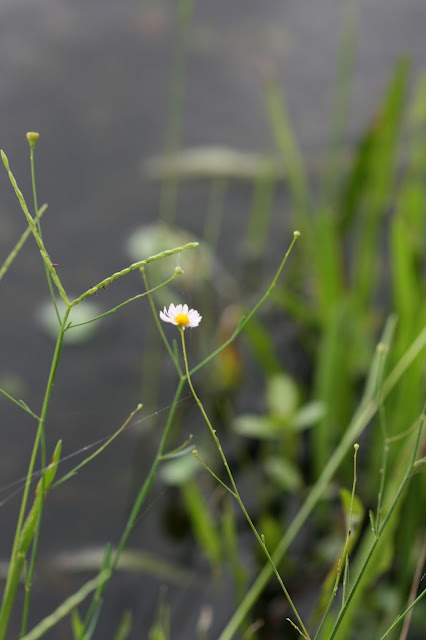Doll's daisy dies back to the ground in winter and emerges in early spring. As it suckers profusely underground, it normally occurs in colonies. It reaches a mature height of 3-5 feet tall by summer. The leaves are narrow, alternate along the stem, and are less than 1 inch long. The leaf margins are often smooth, but may have several small teeth.
Flowering occurs from summer through fall. Each bloom is 1/2 inch across, on average, and composed of numerous white to light lavender ray petals surrounding a bright yellow disk. Each is held on long stems on top of the main branches. Like all members of the daisy family, they attract pollinators.
Doll's daisy requires seasonably wet to shallowly inundated soils. As such, it is not a wildflower likely to be offered for home landscape purposes. Its small flowers and spindly stems also reduce its aesthetic qualities, but it has value in a wetland pollinator garden. To my knowledge, it is not available commercially, but could be grown from seed collected in fall.




These were for sale in small containers at Maple Street Natives in Melbourne. Their plant stock varies each time I go, but they were available this weekend.
ReplyDelete